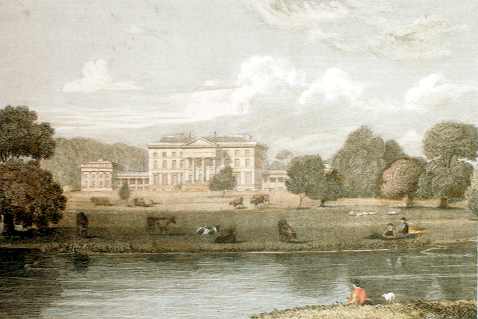Home > Historical Heritage Tours > Kingdom of the Dragon and Lion > < Day 3 ….. Day 5 >
We begin our third day in the Welsh Marches by a visit to Attingham Park, 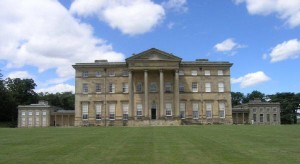 an impressive Palladian House situated a few miles east of Shrewsbury at Atcham. Built for the 1st Lord Berwick in 1785 this large English Country House was in continuous ownership by the family for more than 160 years and was once considered to be Shropshire’s grandest home. The building utilises visual perspective to emphasize its grandness and consists of a main three story block with a classical portico rising to the full height of the building. The interior of the house is equally impressive, with chimney pieces, pier-glasses, scagliola columns in the hall and superb plasterwork ceilings in the rooms together with a collection of fine 18th century furnishings.
an impressive Palladian House situated a few miles east of Shrewsbury at Atcham. Built for the 1st Lord Berwick in 1785 this large English Country House was in continuous ownership by the family for more than 160 years and was once considered to be Shropshire’s grandest home. The building utilises visual perspective to emphasize its grandness and consists of a main three story block with a classical portico rising to the full height of the building. The interior of the house is equally impressive, with chimney pieces, pier-glasses, scagliola columns in the hall and superb plasterwork ceilings in the rooms together with a collection of fine 18th century furnishings.
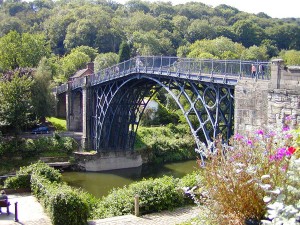 In contrast to the grandeur of Attingham we journey to Ironbridge in Coalbrookdale, often termed the cradle of the Industrial revolution. Iron was being made in the Severn Valley from the reign of Henry VII but only in small batches, using charcoal to generate the heat required to smelt the iron ore. When charcoal becoming increasingly expensive during the early eighteenth century, the ironmaster Abraham Darby of Bristol, experimented using a substance called coke, a fuel produced by baking coal at high temperatures. The best coal for coke production was mined in Coalbrookdale, so that’s where Darby relocated his business in 1709 and produced iron more cheaply in larger quantities than any other. His company started out making cooking pots but quickly expanding into the production of cast iron steam engine cylinders and bridges and Coalbrookdale subsequently became one of the most important industrialised areas in the world during the eighteenth century. A lasting legacy to Darby’s achievments is the famous Iron Bridge which spans the river Severn
In contrast to the grandeur of Attingham we journey to Ironbridge in Coalbrookdale, often termed the cradle of the Industrial revolution. Iron was being made in the Severn Valley from the reign of Henry VII but only in small batches, using charcoal to generate the heat required to smelt the iron ore. When charcoal becoming increasingly expensive during the early eighteenth century, the ironmaster Abraham Darby of Bristol, experimented using a substance called coke, a fuel produced by baking coal at high temperatures. The best coal for coke production was mined in Coalbrookdale, so that’s where Darby relocated his business in 1709 and produced iron more cheaply in larger quantities than any other. His company started out making cooking pots but quickly expanding into the production of cast iron steam engine cylinders and bridges and Coalbrookdale subsequently became one of the most important industrialised areas in the world during the eighteenth century. A lasting legacy to Darby’s achievments is the famous Iron Bridge which spans the river Severn  and was the first constructed entirely of Iron in 1779. We will visit The Coalbrookdale Museum of Iron which consists of a number of restored buildings all associated with the influential Coalbrookdale Company. Coalbrookdale Museum of Iron, the Darby Furnace, and the Darby Houses which together provide us with a real sense of this early industrial community which flourished here between 1715 and 1900.
and was the first constructed entirely of Iron in 1779. We will visit The Coalbrookdale Museum of Iron which consists of a number of restored buildings all associated with the influential Coalbrookdale Company. Coalbrookdale Museum of Iron, the Darby Furnace, and the Darby Houses which together provide us with a real sense of this early industrial community which flourished here between 1715 and 1900.
Whilst in Iron Bridge we will also visit the fabulous Blists Hill Victorian village at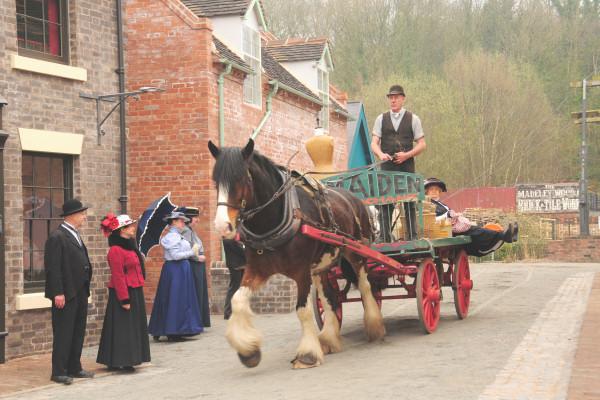 the Iron Bridge Gorge Museum, filled with Victorian characters in costume going about their daily life. The 52 acre site is a bustling recreation of a Victorian town with a host of restored Victorian buildings. There is a chemist, schoolhouse , a farm area, a blacksmith, ironmonger, printers, butcher, baker and yes a candlestick maker! There is even a bank where you can exchange money for ‘old’ money to spend in the various shops which may include traditionary made hot pies, pasties and cakes made in the bakers shop, old fashioned candy from the sweetshop or sample some real ale in the village pub accompanied by a piano for a Victorian “sing a long”.
the Iron Bridge Gorge Museum, filled with Victorian characters in costume going about their daily life. The 52 acre site is a bustling recreation of a Victorian town with a host of restored Victorian buildings. There is a chemist, schoolhouse , a farm area, a blacksmith, ironmonger, printers, butcher, baker and yes a candlestick maker! There is even a bank where you can exchange money for ‘old’ money to spend in the various shops which may include traditionary made hot pies, pasties and cakes made in the bakers shop, old fashioned candy from the sweetshop or sample some real ale in the village pub accompanied by a piano for a Victorian “sing a long”.
For our final trip of the day we travel to the small picturesque town of Much Wenlock. This small market town grew up around a monastery, founded in 680 AD by Merwalt, King of Mercia. 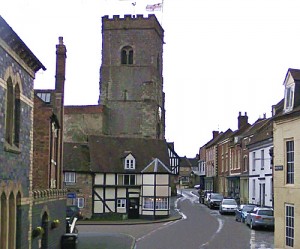 It continued to prosper as Wenlock Priory grew in fame and importance. Today the attractive town is a mix of medieval buildings, bustling narrow streets and specialist shops. Much Wenlock is almost untouched by modern development and there is even a working farmyard at its centre.The best known building is the splendid timber-framed Guildhall, dating from 1577, still used for Town Council meetings. Wenlock Priory, dissolved by Henry VIII in 1540, sustained damage during the Civil War and was later pillaged for building materials. The evocative ruins of the 12th century priory, at the heart of the town, are now surrounded by gardens with striking topiary. Dr William Penny-Brookes (1809 – 1895), founder of the modern Olympics,
It continued to prosper as Wenlock Priory grew in fame and importance. Today the attractive town is a mix of medieval buildings, bustling narrow streets and specialist shops. Much Wenlock is almost untouched by modern development and there is even a working farmyard at its centre.The best known building is the splendid timber-framed Guildhall, dating from 1577, still used for Town Council meetings. Wenlock Priory, dissolved by Henry VIII in 1540, sustained damage during the Civil War and was later pillaged for building materials. The evocative ruins of the 12th century priory, at the heart of the town, are now surrounded by gardens with striking topiary. Dr William Penny-Brookes (1809 – 1895), founder of the modern Olympics, 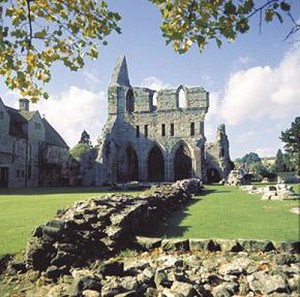 was born in Much Wenlock and the Wenlock Olympian Society held its first games in the town in 1858. The Society’s concept was quickly adopted and developed across the world and as a result the first international modern Olympic Games were held in Athens in 1896. Much Wenlock still organises its own Olympics every July. After a pleasant walk around Much Wenlock and it’s Priory, this concludes our excursion along the valley of the River Severn.
was born in Much Wenlock and the Wenlock Olympian Society held its first games in the town in 1858. The Society’s concept was quickly adopted and developed across the world and as a result the first international modern Olympic Games were held in Athens in 1896. Much Wenlock still organises its own Olympics every July. After a pleasant walk around Much Wenlock and it’s Priory, this concludes our excursion along the valley of the River Severn.
Day 4 Highlights:
- Attingham Park
- Ironbridge
- Coalbrookdale Museum
- Blists Hill Victorian Village
- Much Wenlock
- Wenlock Priory




